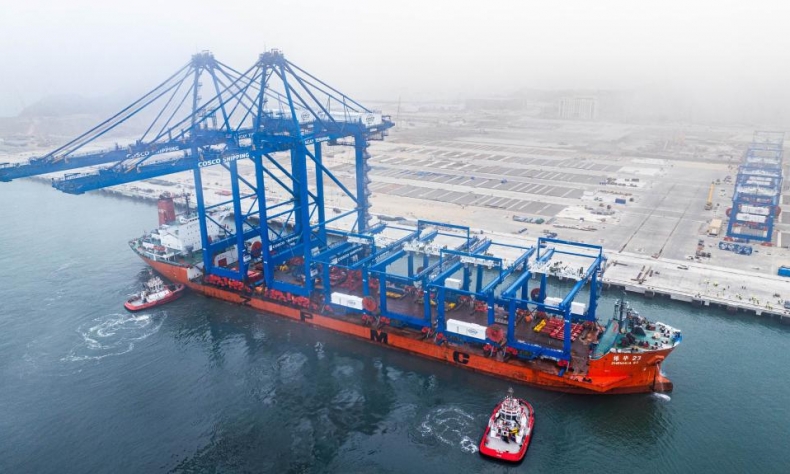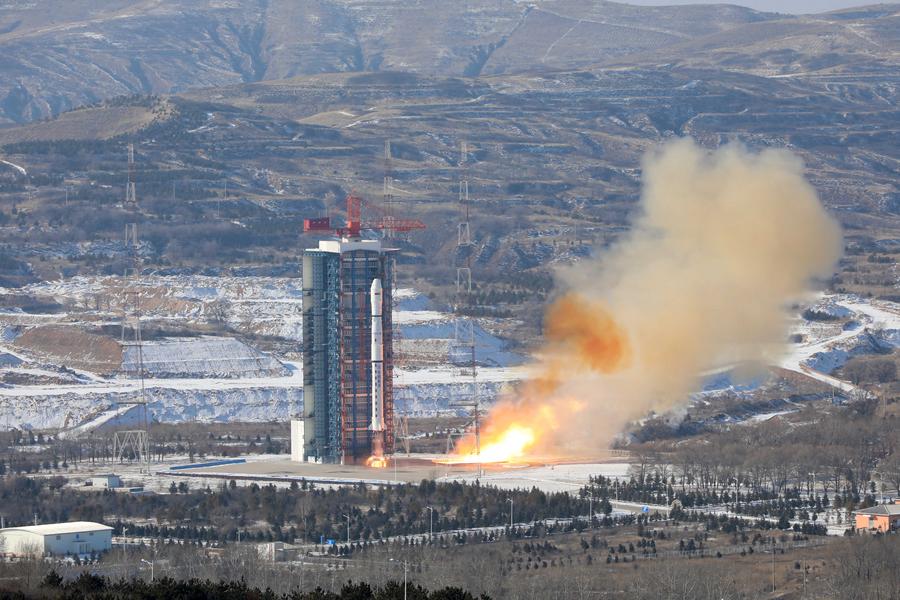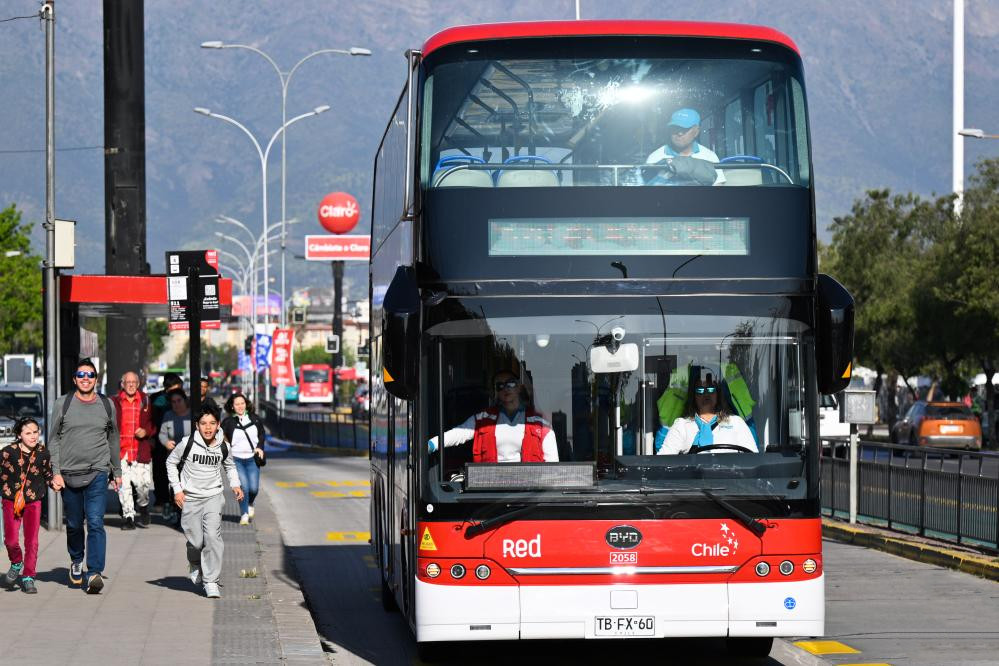Forging a Shared Future

By leveraging complementary advantages, China and Latin America can drive technological progress that benefits people on both sides.
China-Latin America cooperation has made significant progress over the last decade. In 2014, Chinese President Xi Jinping’s proposal for building “a community with a shared future between China and Latin America and the Caribbean” breathed new life into this cooperation and partnership. Since then, cooperation between China and the region has flourished across diverse sectors, from infrastructure and technology to agriculture and academia.
This collaboration has yielded tangible results: Argentina’s deep space station supports Chinese space missions, while China and Brazil jointly develop Earth resource satellites. The development of the Sino-Latin American sustainable food innovation center further exemplifies this partnership. These endeavors not only drive economic and social progress on both sides but also underscore how technological cooperation can play a pivotal role in advancing human rights.
Current status and advantages
China’s expertise in technological research and development, application, and market promotion complements Latin America’s strengths, particularly in areas like natural resource management, biodiversity protection, and space technology, with Brazil leading the way.
Latin America’s large and growing population, coupled with its expanding economy, offers a substantial market for Chinese technological products and services. Simultaneously, the rising demand for technological advancement across Latin American countries presents opportunities for collaboration between tech companies from both. By leveraging these complementary advantages, China and Latin America can drive technological progress that benefits people on both sides.
The Chinese Government has placed a high value on scientific cooperation with Latin American countries, implementing supportive policies to foster collaboration. Latin American nations, welcome investment from and cooperation with Chinese tech organizations and enterprises, creating a favorable policy landscape for bilateral initiatives.
A prime example of this partnership is the agreement signed in Beijing on July 6, 1988, between China and Brazil to jointly develop Earth resource satellites under their respective aerospace industry authorities, marking the official launch of the China-Brazil Earth Resources Satellite (CBERS) or ZY-1 (Ziyuan-1) satellites project. This collaboration has successfully launched multiple satellites, including CBERS-01, CBERS-02, and CBERS-02B, which continue to operate stably in orbit, collecting vast amounts of observational data and providing free image data not only for China and Brazil but to many other countries worldwide.
The CBERS satellites have been invaluable across various sectors in China, including agriculture, forestry, water conservancy, land survey, energy, geology and minerals, oceanography, environmental protection, and urban and rural planning. Brazil has also made extensive use of the satellite data to monitor the Amazon rainforest and combat deforestation. Building on these successes, both nations plan to expand their collaboration into meteorological and communication satellites.

When COVID-19 struck in 2020, China was the first nation to supply vaccines to Latin American and Caribbean countries, providing hundreds of millions of doses to over 20 nations in the region, greatly aiding their fight against the virus.
Beyond direct vaccine provision, China has also engaged in local vaccine production partnerships. In May 2022, Sinovac, a Chinese biopharmaceutical company, broke ground on a new vaccine factory in Quilicura, located in Chile’s capital region. Then Chilean Science Minister Flavio Salazar said at the launch ceremony for the factory that the project is strategically important for the development of Chile’s vaccine manufacturing industry, which had not made progress for approximately 20 years.
The China-proposed Belt and Road Initiative (BRI), which aims to enhance connectivity along and beyond the ancient Silk Road routes, is gaining momentum in Latin America and the Caribbean, with 22 countries in the region now committed to cooperation. This partnership is flourishing in sectors including agriculture, e-commerce and logistics. Silk Road E-commerce, an international cooperation platform for trade and economic cooperation under the BRI, has opened new avenues for Latin American agricultural exports to China.
Collaboration on agricultural technology is thriving as well. Chinese farming equipment is boosting productivity across the region. Agricultural expertise exchange through delegations, training programs and joint research facilities is bringing Chinese expertise in crop cultivation, livestock raising and aquaculture to Latin American shores.
China’s global leadership in drone technology and digital agriculture is revolutionizing farming practices in countries including Guyana and Nicaragua. The South-South Cooperation Trust Fund project, supported by the United Nations Food and Agricultural Organization, is digitalizing food systems and enhancing rural e-commerce.
The establishment of direct maritime routes between Corinto Port in Nicaragua and Tianjin in China symbolizes the strengthening Sino-Latin American trade ties. These developments herald a promising future for this strategic partnership.
New season
Sino-Latin American scientific collaboration is ripe for expansion. The next phase should focus on enhancing researcher mobility, drawing more top-tier Latin American students to Chinese institutions and inviting Latin American scholars for research engagements in China. Currently, the Chinese Academy of Sciences counts only one Latin American, Brazilian mathematician Jacob Palis, among its foreign members. Increasing this representation would signify strengthening academic bonds and should be a priority in the coming years.

Meanwhile, Sino-Latin American technological cooperation currently centers on established fields like satellite communications, astronomy, agriculture, medicine, and nuclear energy. However, engagement in emerging, high-potential technologies remains limited. As artificial intelligence (AI) governance becomes a global focal point, with the EU and U.S. exploring regulatory frameworks, China and Latin America have a unique opportunity to jointly address AI-related policy and legal challenges.
Scientific exchanges between China and Latin America are predominantly driven by intergovernmental initiatives, such as the CBERS project and China-Mexico agricultural collaboration. To deepen these partnerships, future efforts should expand beyond government-led programs, fostering increased civil society and private sector involvement. This diversification will be crucial for cultivating a more solid and multifaceted scientific relationship between the two sides.
Latin America’s AI implementation currently trails global averages, with a 37-percent adoption rate compared to 42 percent worldwide. However, the region’s potential for AI growth is substantial, driven by a young, tech-savvy population—65 percent of whom are under middle age and receptive to AI innovations. Latin America’s global leadership in clean energy production provides a firm foundation for meeting AI’s great power demands.
China, at the forefront of global AI development, is well-positioned to support Latin America’s AI aspirations, particularly within the framework of the Digital Silk Road initiative, which was introduced in 2015 as a part of the BRI.
During a group interview with visiting Latin American and Spanish media on December 11, 2019, Ren Zhengfei, founder of Chinese tech company Huawei, told a Mexican journalist that if future manufacturing relies on AI, Mexico will shine as brightly as Mayan culture.
The China-CELAC (Community of Latin American and Caribbean States) Digital Technology Cooperation Forum held in Southwest China’s Chongqing on September 4, 2023, was a pivotal moment in Sino-Latin American digital collaboration. As Latin America rides this digital wave, leveraging China’s technological leadership will be crucial for realizing its AI potential and broader digital transformation goals.
As China-Latin America relations deepen, educational collaboration becomes crucial. While current educational partnerships lag behind economic ties, advancing technological cooperation and human rights requires skilled professionals. Prioritizing higher education partnerships, scholarships, credit recognition, and streamlined visa processing can facilitate student exchanges and vocational training. Addressing Chinese enterprises’ skilled labor shortages in Latin America through these initiatives will bridge talent gaps, enhance skill development, and meet both sides’ socio-economic needs.
The author is executive director of the Center for Science, Technology and Human Rights at the Beijing Institute of Technology.
 Facebook
Facebook
 Twitter
Twitter
 Linkedin
Linkedin
 Google +
Google +










